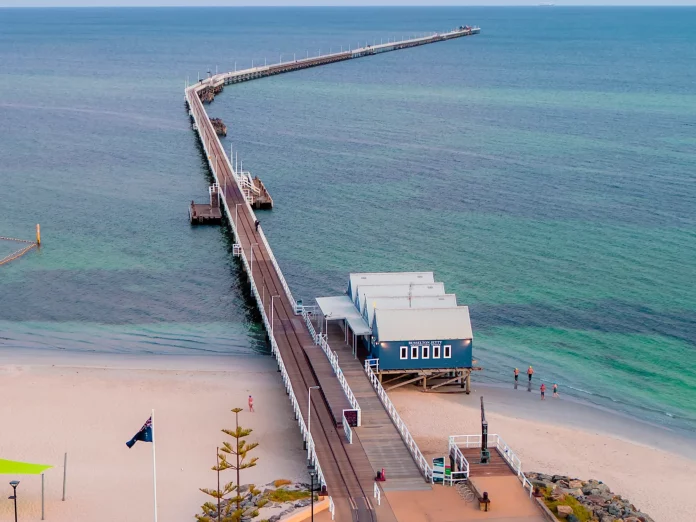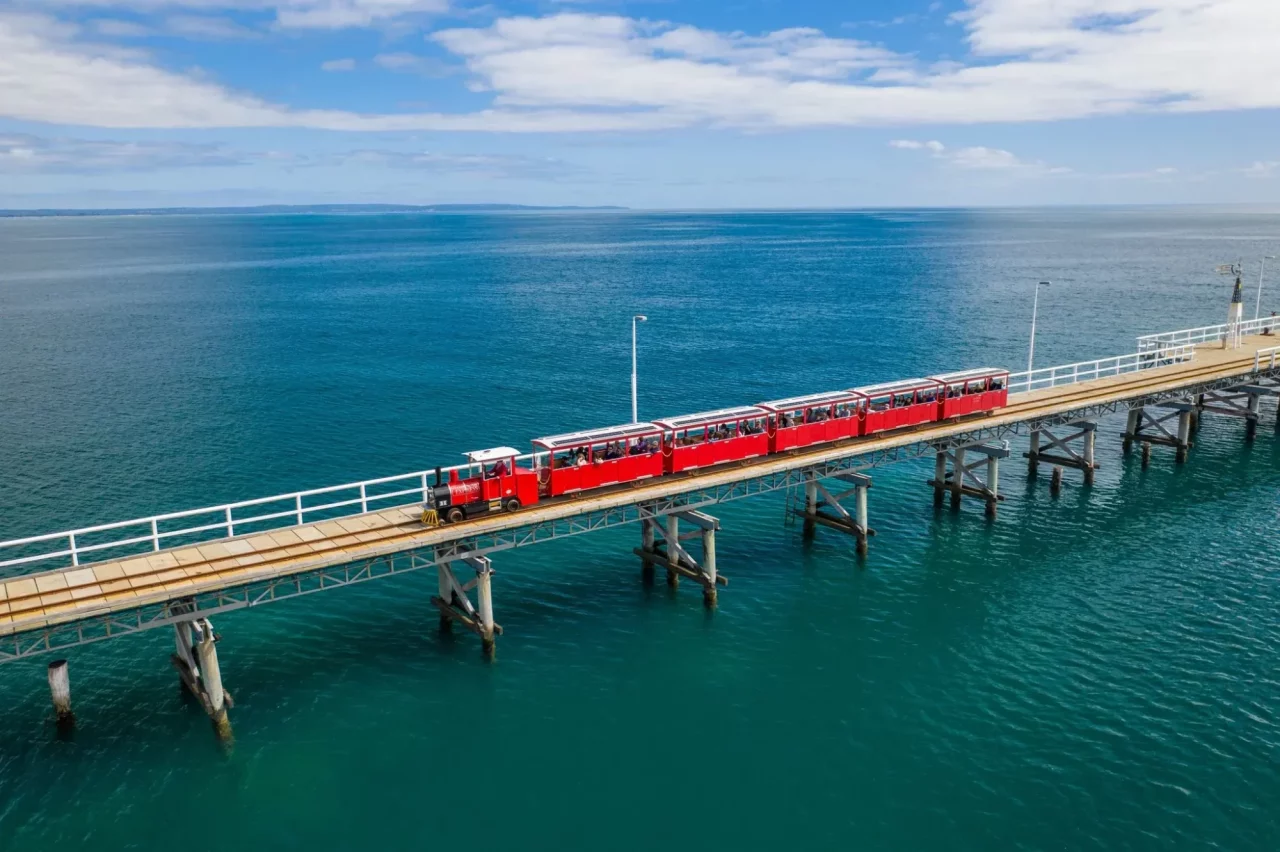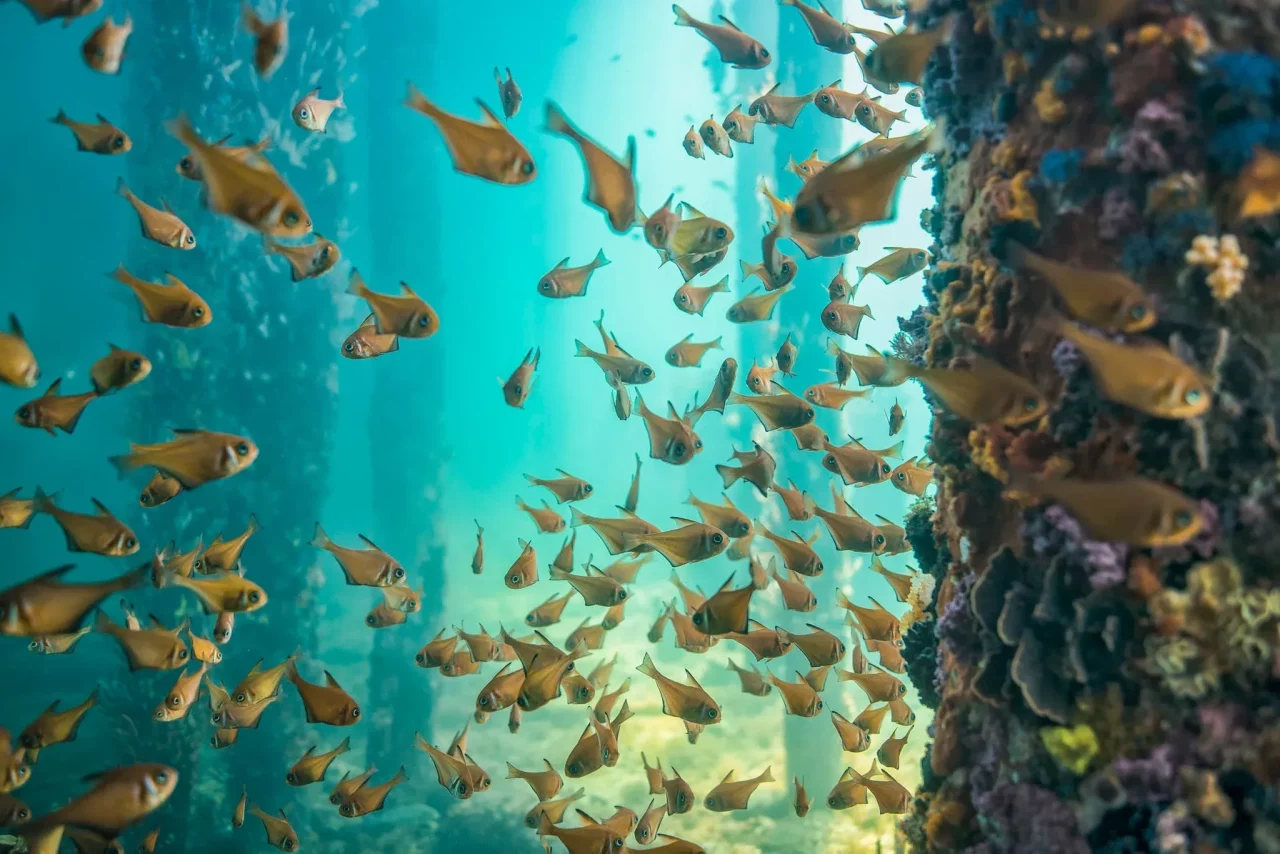It’s the proximity it gives us to the water, a playground of exploration, and it’s the romance of the structure, its vastness, partly submerged in briny mystery, the weathering it endures. Old jetties are particularly alluring, steeped in history and the tales of communities well into the past.
Busselton’s picturesque Geographe Bay hosts the southern hemisphere’s longest timber piled jetty. Now at 1.84km long, the heritage listed beauty has been extended nine times since its initial build by Henry Yelverton, completed in 1865, when it measured “only” 176 metres in length. Adjustments since have been made to account for miscalculations, growing demand and to improve its integrity.
In its early years, the working jetty serviced exports and trade for industries of the region including crops of wheat, barley and oats, various livestock, whaling and the Quindalup timber mills. “The Tub”, a DIY lighthouse of sorts, was added in 1863 to guide the increasing traffic’s navigation needs. From there to today’s recreational jetty, of train tours, an underwater observatory and interpretive centre museum, many stories have unfolded.
1960
The final 16m extension occurred in 1960, bringing the jetty to its current length. Bunbury Port was by then dominating the trade workload and in 1971 the Busselton jetty was closed as a shipping port after servicing 5000 ships over 100 years. When the government proposed to destroy the icon, the community rallied, holding public meetings which would eventually form the “Save our Jetty” group.
In October of 1976, a meeting of the group resolved that Busselton Shire council would seek ownership of the Busselton Jetty from the state government’s Public Works Department. It was around this period that the Underwater Observatory idea was raised. On surveying residents, the vast majority of ratepayers endorsed any project aimed at restoring and protecting their jetty. Demolition was off the table and instead the Shire was awarded $500,000 towards a rebuild.
To support fundraising, the ‘Busselton Jetty Preservation Committee’ (now known as the Busselton Jetty Environment and Conservation Association or BJECA) was formed.
In 1979, Busselton pioneer descendant John Bussell completed the up and back jetty walk 151 times over 14 days. His long walk of 580km raised $3500.
1990
Major reconstruction of the jetty took place in 1990, funded partially by the introduction of entrance fees and money originally allocated to the jetty’s demolition. By 1995, a small train service resumed on the old cargo line. Inclusive for the mobility impaired, up to 40 passengers could travel up the line to the end of the jetty and back, a paid attraction with broad appeal.
Fire engulfed the jetty in 1999, destroying around 70m of timber. Responders struggled to contain the blaze but eventually had to chainsaw away the burning area, allowing it to collapse into the ocean to subside, isolating the last 150m of the jetty. While unresolved, it’s widely believed the fire was sparked by a cigarette butt.
In 2001 a learning centre at the jetty’s shore end was completed. The Interpretive Centre provides an inclusive environment for visitors to discover the jetty’s rich history and exquisite marine life and purchase memorabilia to fund jetty maintenance. Simultaneously, construction began on the long planned underwater observatory. At 13m deep and 8.5m wide, the tank-like structure boasts 11 viewing windows made of concrete and steel. By 2003 the observatory was completed and sunk, where viewers can now mingle with over 300 known marine species.
TODAY
After a two-year shutdown and overhaul from 2009-2011, the jetty reopened to thrive in its contemporary state. Following 150th birthday celebrations in 2015 and a new electric train service in 2017, the jetty continues to provide world class facilities for visitors and locals alike. Diving and snorkeling around the jetty is said to be some of the best in the world, and as a piece of shoreline eye candy, it’s a breathtaking sight.
A project is now in the works for the Busselton Jetty Marine Discovery Centre. A village style hub of fine food, marine education and diving facilities at 1.7km out to sea, with predicted completion in June 2023. We can fairly guarantee the Busselton Jetty will be around for as long as people are here to enjoy it, and the Geographe Bay sunset wouldn’t be the same without it.
(Article attributed: Margaret River)











